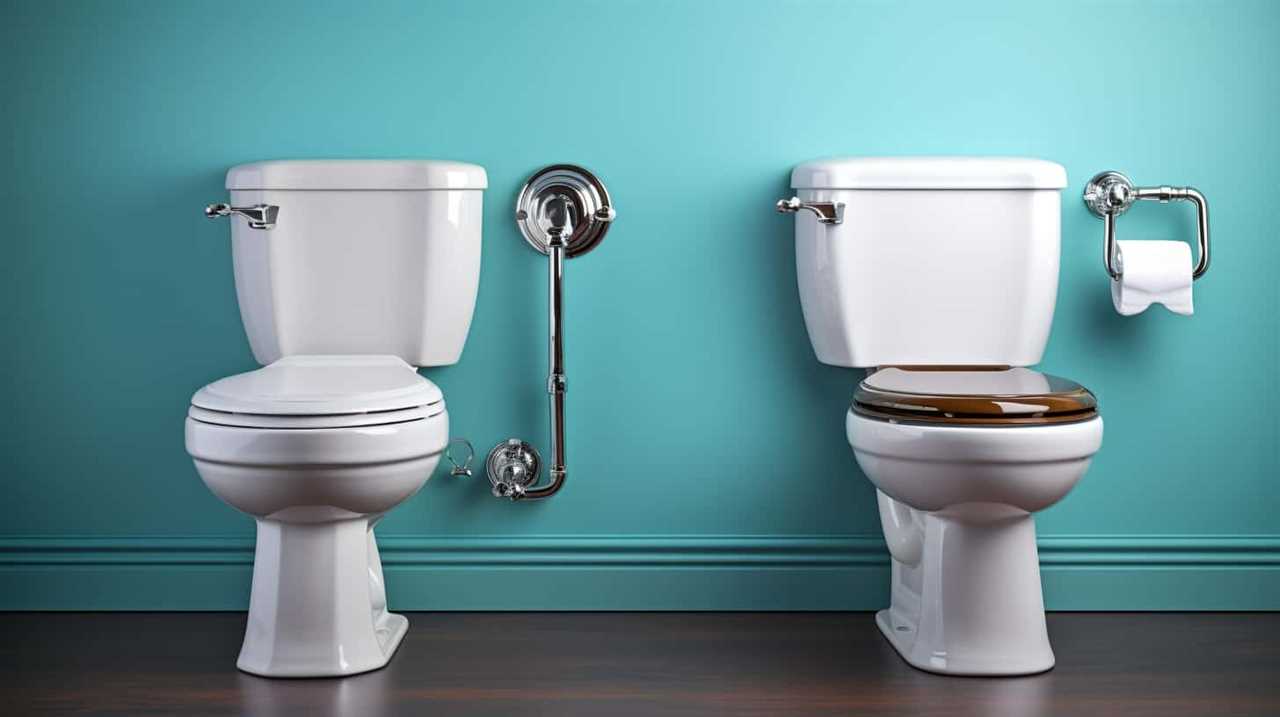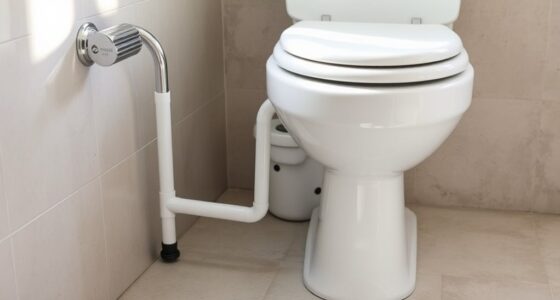Have you ever found yourself in a panic when the toilet suddenly overflows, water rushing out like a river in your bathroom? Well, fear not! In this article, we will guide you through the steps on how to handle this messy situation with ease.
From shutting off the water supply to clearing the clog and preventing future incidents, we’ve got you covered.
So, let’s dive in and become masters of toilet overflow emergencies!
Key Takeaways
- Shut off the water supply to prevent further overflow.
- Clear the clog using a plunger or toilet auger.
- Clean up the mess by removing excess water and sanitizing the area.
- Take preventive measures to avoid future overflow incidents, such as regular inspection and maintenance of the toilet, proper waste disposal, and monitoring water usage.
Shut off the Water Supply
To prevent further damage, we should immediately shut off the water supply when the toilet overflows. Turning off the water supply is an essential step in dealing with this situation. Here are some plumbing tips on how to do it properly:
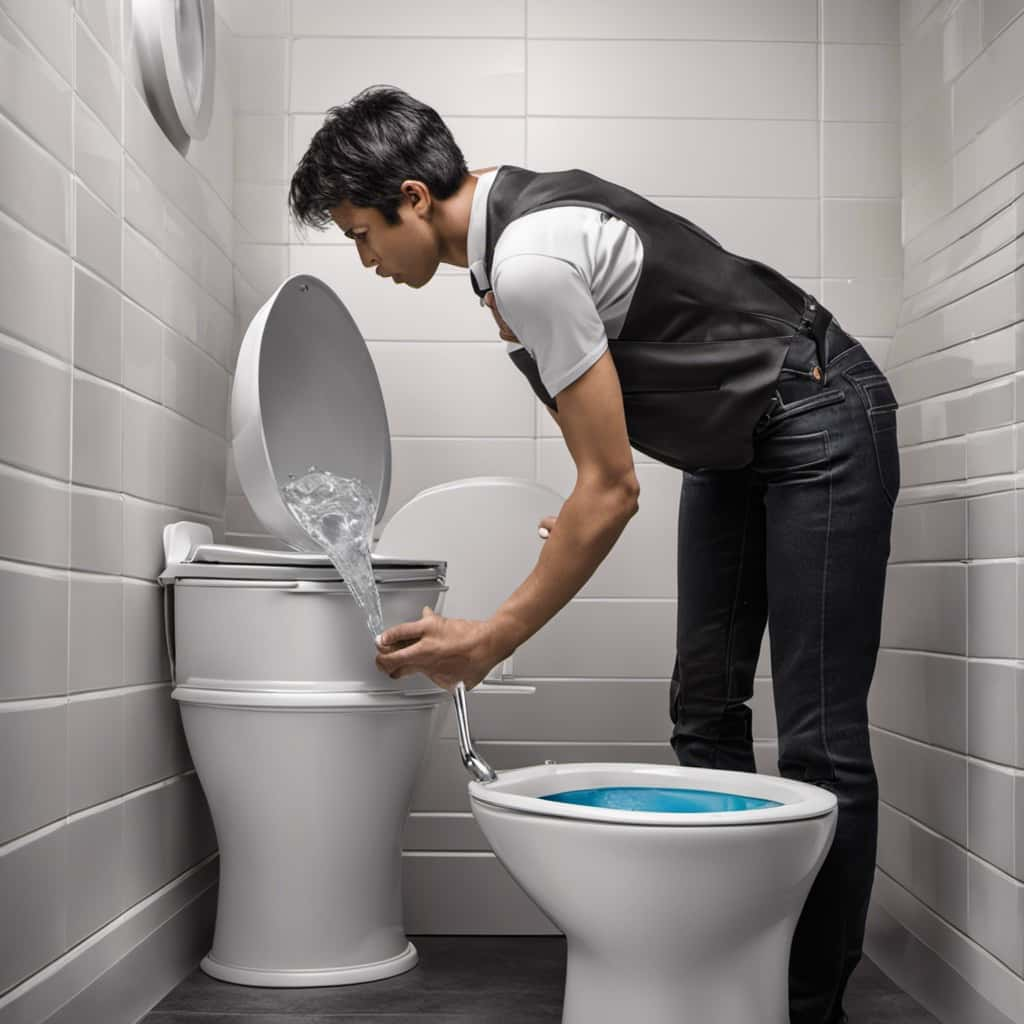
- Locate the water shut-off valve. It’s usually located on the wall behind or near the toilet.
- Turn the valve clockwise to shut off the water flow. If the valve is stuck, use a pair of pliers to help you turn it.
- Once the water supply is turned off, the flow of water to the toilet will stop, preventing any further overflow.
- Keep the water shut off until the clog is cleared and the toilet is functioning properly again.
Now that the water supply is shut off, let’s move on to the next step, which is clearing the clog.
Clear the Clog
Now that we’ve shut off the water supply, let’s tackle the clog. Dealing with a clogged toilet is a common plumbing emergency that requires immediate attention. Follow these step-by-step instructions to unclog the toilet effectively.
- Start by using a plunger. Place the plunger over the drain hole and firmly push down and pull up repeatedly to create suction.
- If the plunger doesn’t work, try using a toilet auger. Insert the auger into the drain hole and turn the handle clockwise while applying downward pressure.
- If the clog persists, it may be necessary to remove the toilet. This step requires advanced plumbing skills, so it’s best to call a professional plumber for assistance.
Clean up the Mess
We can handle the aftermath of a toilet overflow by promptly cleaning up the mess. Damage control is crucial in preventing further water damage and minimizing the risk of mold growth. Here is a step-by-step guide on how to clean up the mess:
- Gather your supplies: rubber gloves, disinfectant cleaner, absorbent towels, and a garbage bag.
- Stop the overflow by turning off the water supply valve behind the toilet.
- Use towels to soak up the excess water and remove any debris.
- Dispose of the towels and debris in a garbage bag.
- Thoroughly clean and sanitize the affected area using a disinfectant cleaner.
- Dry the area completely to prevent mold growth.
By following this sanitizing process, you can ensure that your bathroom is clean and free from any potential health hazards.
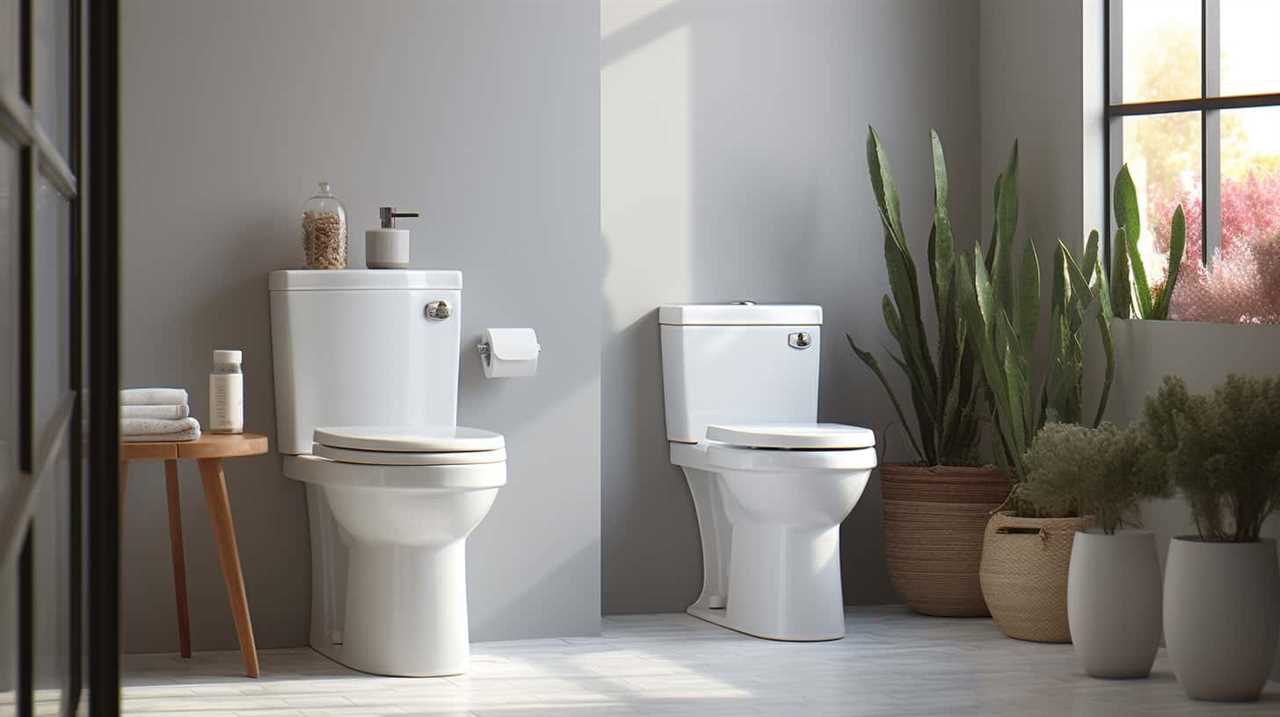
Now, let’s move on to the next section to learn how to prevent future overflow incidents.
Prevent Future Overflow Incidents
To prevent future overflow incidents, it’s important for us to take proactive measures and regularly maintain our toilets. By following these steps, we can ensure a well-functioning and trouble-free toilet system.
- Regular maintenance: Regularly inspect and clean the toilet bowl, tank, and pipes to prevent clogs and blockages. Check for any signs of wear and tear, such as cracks or leaks, and repair them promptly.
- Proper waste disposal: Dispose of waste properly by only flushing toilet paper and bodily waste down the toilet. Avoid flushing items like sanitary products, wipes, and paper towels, as they can cause blockages.
- Monitor water usage: Be mindful of the amount of water used during each flush. Consider installing a water-saving device or adjusting the water level in the tank to reduce the risk of overflow.
- Educate household members: Teach everyone in the household about proper toilet usage and maintenance. Encourage them to report any issues or concerns immediately.
Seek Professional Assistance if Necessary
If the overflow issue persists despite our best efforts, it may be necessary to seek professional assistance. While some toilet overflow incidents can be resolved with DIY solutions, there are times when the expertise of a plumber is required.
Here are three reasons why calling a plumber might be necessary:
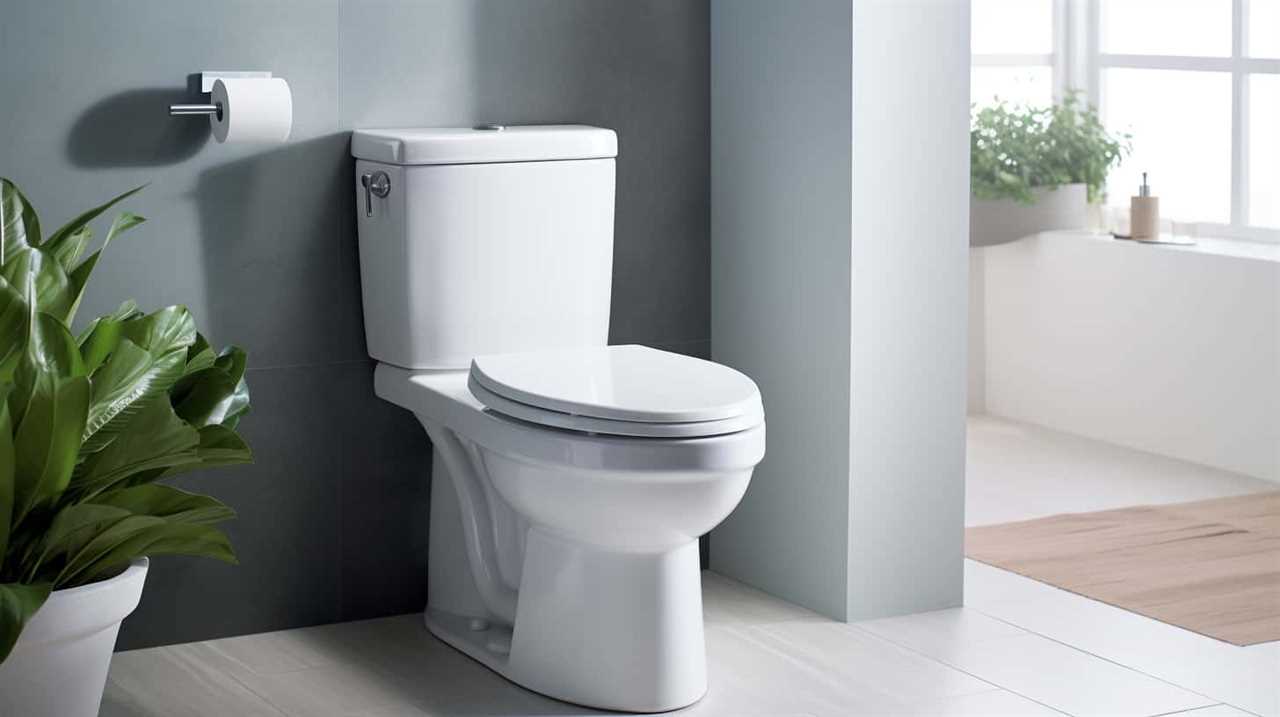
- Complex clogs: If you have tried using a plunger or a plumbing snake without success, it could indicate a more serious blockage deeper in the pipes. A plumber will have the tools and knowledge to locate and remove the obstruction.
- Damaged pipes: A toilet overflow can sometimes be a symptom of damaged or corroded pipes. A professional plumber can assess the condition of the pipes and perform any necessary repairs or replacements.
- Water damage: If the overflowing water has caused significant damage to the floor, walls, or surrounding areas, it’s crucial to involve a professional plumber. They can’t only fix the immediate issue but also help mitigate any potential long-term damage.
Frequently Asked Questions
How Can I Determine if the Toilet Overflow Is Caused by a Clog or a Different Issue?
To determine if a toilet overflow is caused by a clog or another issue, we can follow a step-by-step process. By inspecting the water level, using a plunger, or checking for blockages, we can identify the problem and take appropriate action.
Can Using a Plunger Help in Clearing a Minor Clog That Is Causing the Toilet Overflow?
Using a plunger can help clear a minor clog causing a toilet overflow. If the clog persists, try using a snake for unclogging toilets. Regular maintenance, like avoiding flushing non-flushable items, can prevent overflows.
Are There Any Specific Cleaning Products or Solutions Recommended for Cleaning up a Toilet Overflow Mess?
When the toilet overflows, it’s important to have specific cleaning products and effective solutions on hand. These will help us quickly and efficiently clean up the mess and prevent further damage.
What Are Some Common Reasons for Toilet Overflows That Are Not Related to Clogs?
When toilet overflows occur, it’s important to understand the common causes beyond clogs. These can include issues with toilet maintenance, such as faulty fill valves or flappers, as well as water pressure problems.
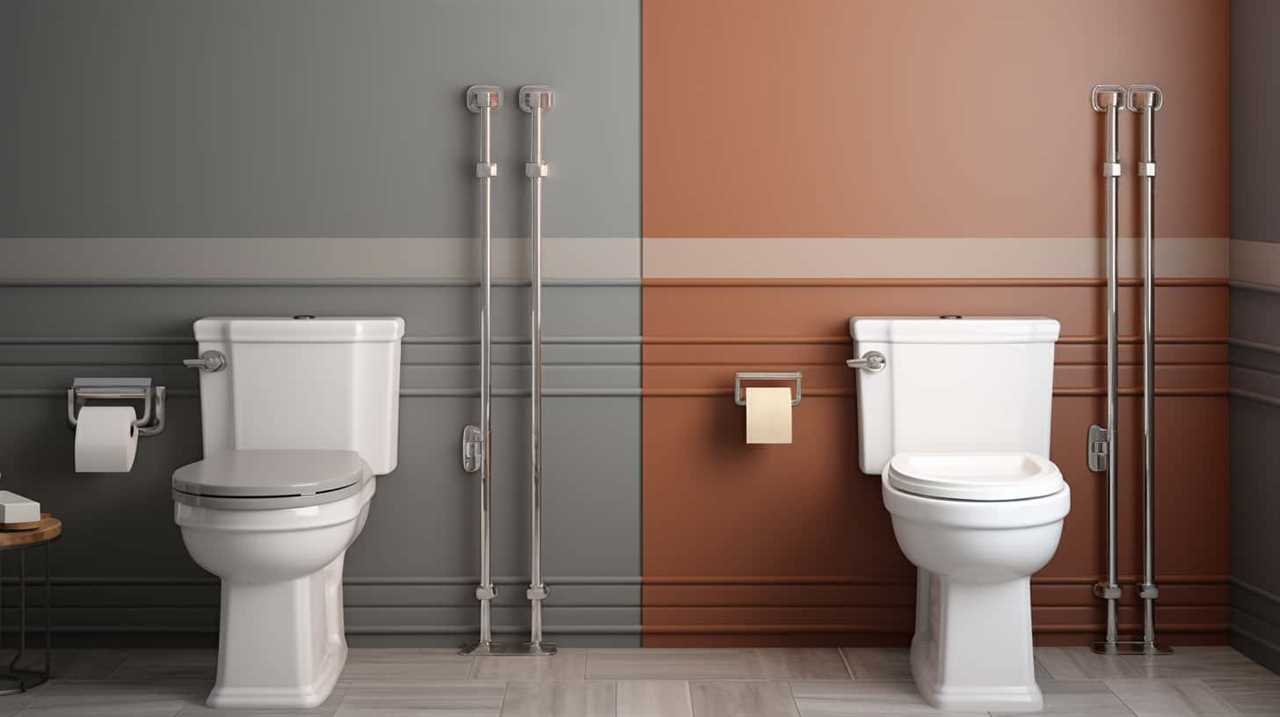
When Seeking Professional Assistance, What Are Some Important Factors to Consider in Choosing a Reliable Plumber or Plumbing Service?
When seeking professional assistance, we need to carefully consider factors such as reputation, experience, and certifications. By doing so, we can avoid common plumbing scams and ensure we choose a reliable plumber or plumbing service.
Conclusion
In conclusion, when faced with an overflowing toilet, it’s crucial to take immediate action.
- Shut off the water supply
- Clear the clog
- Clean up the mess to prevent further damage
Implement preventive measures to avoid future incidents. Remember, seeking professional assistance is always an option if the problem persists.
By following these steps, you can effectively handle toilet overflows and maintain a functional bathroom.

